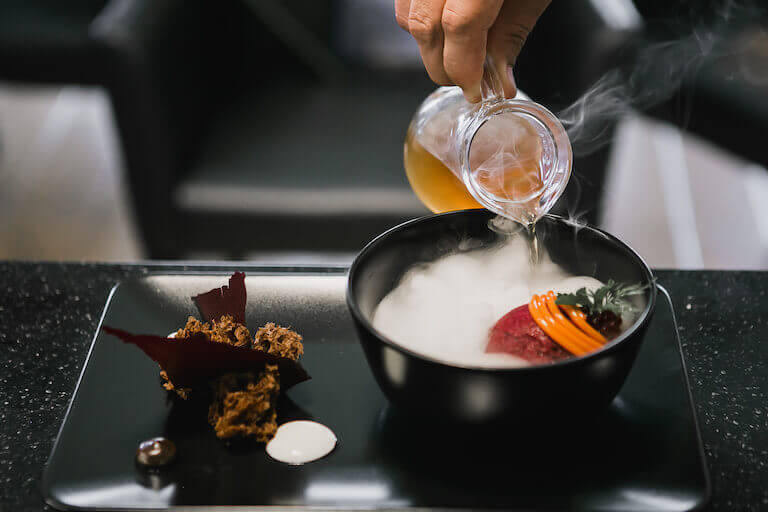
When it comes to cooking skills for kids, there are several different age ranges and levels of difficulty. The basic techniques are best suited for younger kids, while older ones may need more assistance. The recommended age range for children is between 3 and 5 years. Listed below are some of the recommended kitchen tasks for kids. These activities can be used as a jumping off point for more complicated cooking and grocery list preparation. There are basic cooking skills kids can learn, regardless of their age.
Basic cooking skills
Basic cooking skills are essential for any successful mealtime, whether you're looking to teach your child to cook or just want to improve your skills. There are many age-appropriate skills for cooking, but some require more supervision. Here are some important guidelines to keep in your mind.
Age ranges
At this age, children are able to wash their hands, follow simple recipes and do the work themselves. Eventually, they will begin to understand the concepts of putting together food, such as mixing ingredients and slicing ingredients. This is also a great time to introduce basic kitchen tools, such as the oven. As they learn and grow, they may be able make adjustments to their recipes or use more complex kitchen appliances.
Techniques
Cooking with your children has a number of benefits. This is a great way for your child to bond with you and build vocabulary. It's a fun way for you to share some responsibility. Cooking for a toddler is a time-consuming task that requires patience. Make sure they are able to cook simple dishes. Recipes that require little cooking time are best. Choose dishes with interesting textures or colours. Using these techniques will make the cooking experience enjoyable for everyone!

Get your kids involved in the kitchen
It's a great way for kids to have fun at dinner. It can also teach them valuable life skills. Although newborns don't have the skills to cook, they can learn basic cooking techniques in the kitchen. Allowing them to experience cooking in the kitchen will help you normalize this activity. As they get older, they will be more interested and capable of cooking. After all, they're bound to be curious about the kitchen as they become more comfortable with it.
Food presentation
Whether cooking for your own family or for your children, food presentation is critical. Food presentation can make a significant impact on the eating habits of children. Here are some suggestions to help your food look its best. You can also include fun garnishes like radish roses and carrot curls. Children should always be supervised when using knives. Asking an adult to assist them with knife use is a good idea if they have any questions.
Measurements
It is a great way to teach math skills to children. There are many benefits to teaching your child this skill, including improving their sense of time. Children will learn how to compare quantities, and to estimate the use of cups and other utensils. These skills will prove to be valuable when students move on to more complex math classes like pre-algebra, geometry, and other advanced mathematics. But it doesn't stop there. Children will develop fine motor skills, enhance their sequencing skills, increase their reading ability, and improve their fine motor skills.
Self-confidence
It is a great way for children to develop self-confidence through their cooking skills. The chances of children continuing these healthy habits in adulthood are higher if they learn to cook from scratch. Additionally, children will feel proud of what they have created, which will increase their self-confidence. Cooking can foster family bonds and teach children a sense of responsibility.

FAQ
Is there a difference between a chef and a cook?
A chef cooks for others. A cook prepares meals for others. A chef, on the other hand, works directly with customers. This may mean that they might have to choose what to cook for guests depending on their preferences. The cook doesn't have to interact with customers. Instead, a cook makes sure the food tastes good before delivering it to customers.
How can I cook like a professional?
Cooking is one of the best ways to become a better person. Cooking healthy meals for your family and friends is a great way of increasing self-confidence and learning new skills. Begin cooking at your own home if you are looking to improve your culinary skills. It is important to discover what type of recipes you enjoy. Then, read books about different foods, such as Italian, Mexican, Chinese, etc. Finally, practice making different dishes until you feel comfortable doing them.
What are the qualifications to be a chef?
A bachelor's degree in culinary art is necessary to become a professional chef. You will also need to pass several tests administered by ACF. You will be issued a certificate once you meet all the requirements.
Statistics
- The median pay for a chef or head cook is $53,380 per year or $25.66/hour, according to the U.S. Bureau of Labor Statistics (BLS). (learnhowtobecome.org)
- In the United States, the category is estimated at $23.2 billion annually and is growing faster than the market. (washingtonpost.com)
- You'll be amazed that over 90% of CIA students receive scholarships and grants to finish their culinary studies. (ischoolconnect.com)
External Links
How To
How to make a perfect omelet
Omelets are one of my favorite foods to eat at breakfast. But how do they turn out so perfectly? I've tried many different methods and recipes, but none of them seem to work! So today, I want to share some tips and tricks with you so you can make your own delicious and fluffy omelets every morning.
Before we start making omelets, let's remember that eggs are temperamental. You must get them fresh, organically, and keep them cold until you cook. The yolks and whites will not form properly if they aren't kept cold enough. Your omelets will look strangely colored if this happens. If you plan to cook the eggs right away, it is best to use room temperature eggs.
You can also separate the egg before you add it to the pan. The yolk and white should not be mixed together as this can cause the omelet's curdle.
The bottom part of an egg that is added directly to the stovetop might be burned, which could cause a ruined texture in your omelet. Instead, heat the egg for 10 seconds in the microwave before placing it in the pan. The microwave heat cooks your egg just right, without it becoming too soft.
Let's now talk about mixing eggs. When you mix eggs together, you want to beat them well. To do this, take the bowl from the mixer and flip it upside-down. Next, shake the bowl vigorously. This will whip the air around the bowl and mix the egg well.
Now comes the fun part: adding the milk to your mixture. Pour half the milk into the beaten egg mixture and then fold in the eggs. Don't worry if there are still streaks of egg visible; these streaks will disappear once you flip the omelet.
After you have folded your eggs, heat up the oil on medium heat. Wait for it to get hot. Once the oil begins to heat, add 1/4 cup butter and swirl the pan to coat it. Carefully open the pan's lid and add salt to the pan. The salt will help to prevent the omelet's sticking to the pan.
Cover the pan once the omelet is formed and allow it to cool completely. Flip the omelet over using a spatula or flip the pan upside down. Cook the other side for another minute or two. Serve immediately after removing the omelet from its pan.
This recipe works best with whole milk, but skimmed milk also works.